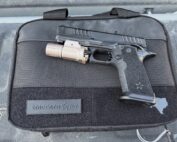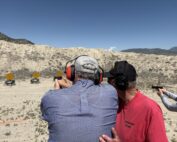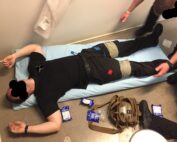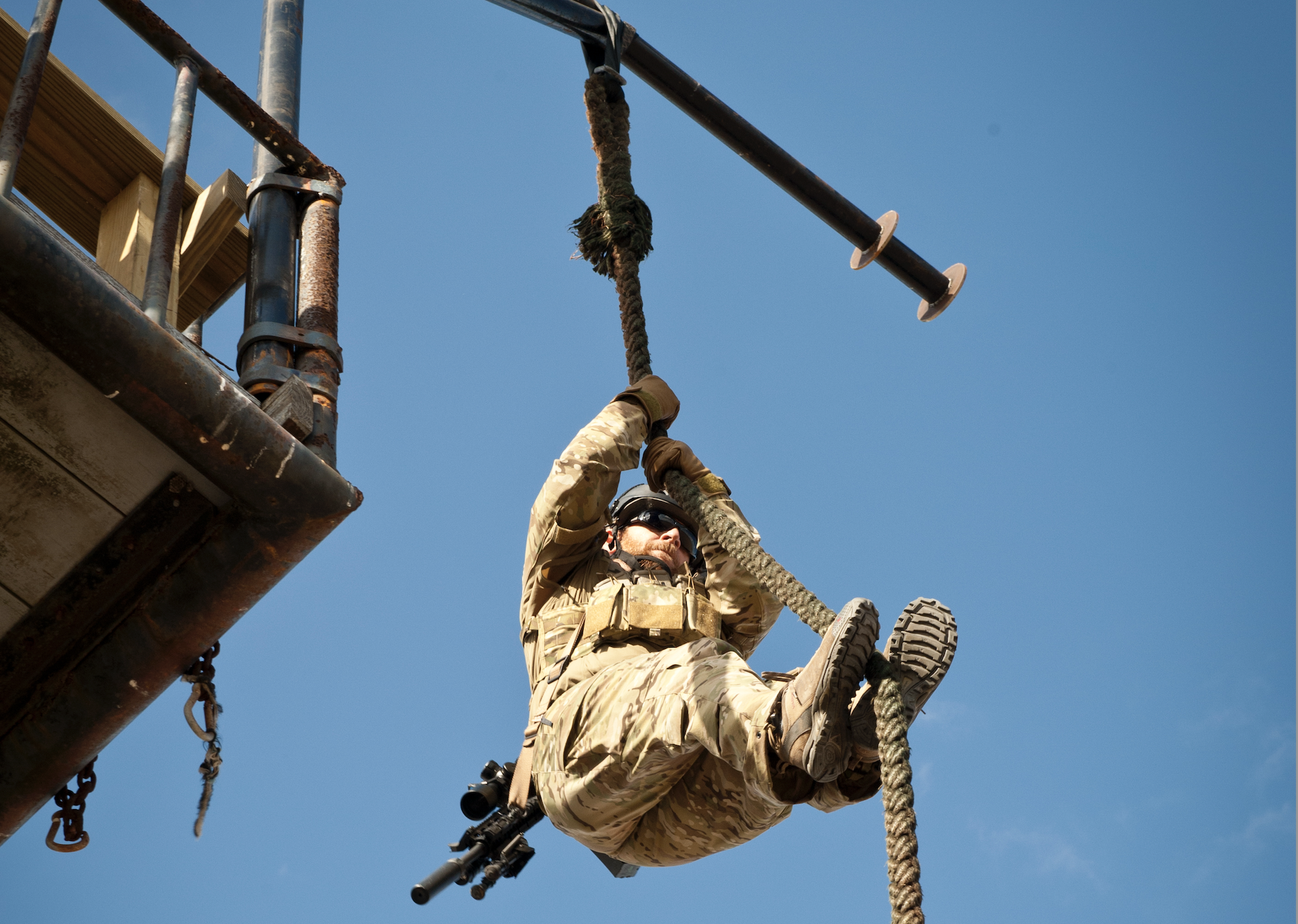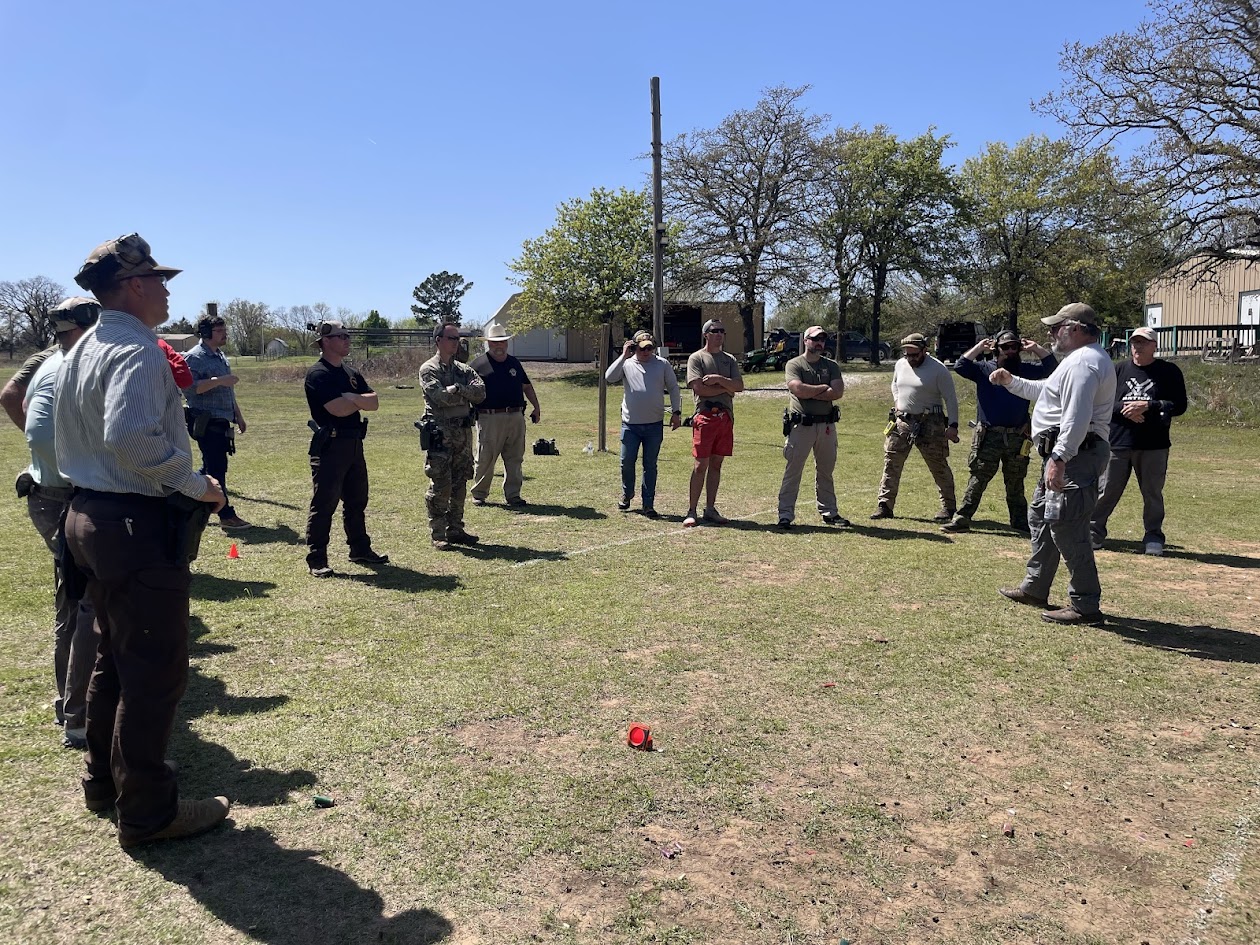
gear_ccwad
From an online ad for a concealed carry permit class. Plate carrier and a drop-leg holster? (Source: facebook).
We are heading into SHOT; as I write this, I’m less than seven days from loading the truck and heading down the road to Las Vegas.
Starting Point
Scrolling through photos for an upcoming presentation, I came across a few pictures that sparked this article.
One picture showed an instructor with a plate carrier, a duty belt, and a drop-leg duty holster on it. The picture was part of an ad for a concealed carry permit class. Instead of the instructor appearing with the type of gear appropriate to the student’s daily situation, it was far more “tactical.” What is that telling the students?
The other photos were shared by a company long known for their concealed carry kydex holsters and magazine pouches. I have been a customer of theirs for at least fifteen years and just bought several holsters and mag pouches from them. Those photos showed a plainclothes officer equipped for a low-visibility event. It’s not undercover, but it’s not decked out in tan and green or LAPD blue, either. Completely viable for the context.
Choices
While my thoughts first went to instructors and their choices, I quickly realized that – unsurprisingly – this applies to students as well. As Pat Rogers is credited with saying, “Mission drives the gear train.” For the decent, normal human beings reading this – think of it as what you are doing should determine what goes with you.

From the live fire portion of ShivWorks ECQC, both AIWB and strong-side hip holsters match the material and desired skills.
Decent, normal humans have equipment needs that might well match a plain clothes or undercover officer and be quite different from what a uniformed street cop requires. While some of the street cop requirements could carry over to some in the military, an assaulter or sniper in a special mission unit will have a whole other set of gear needs.
I won’t tell you that I never teach out of a duty rig with a level II duty holster and pouches for pistol and rifle magazines, med gear, and the like – because I do. That is appropriate when I’m teaching a law enforcement-centric class, whether it is at an agency or to a group of coppers.
However –
If it’s a concealed carry skills class, I will work from concealment as soon as the class progression allows me. Meaning that once everyone is safe with their equipment, cover garments go on and off we go.
Why not teach concealed carry-related material to decent, normal humans out of a duty rig? Because that’s not their reality.
But, Erick, what about in-between classes? Depends on the course material. Generally, it will be a holster and magazine pouch attached to my trouser belt. That belt will support a TQ pouch and keep my trousers up, even with a flashlight and a cell phone in my pockets.
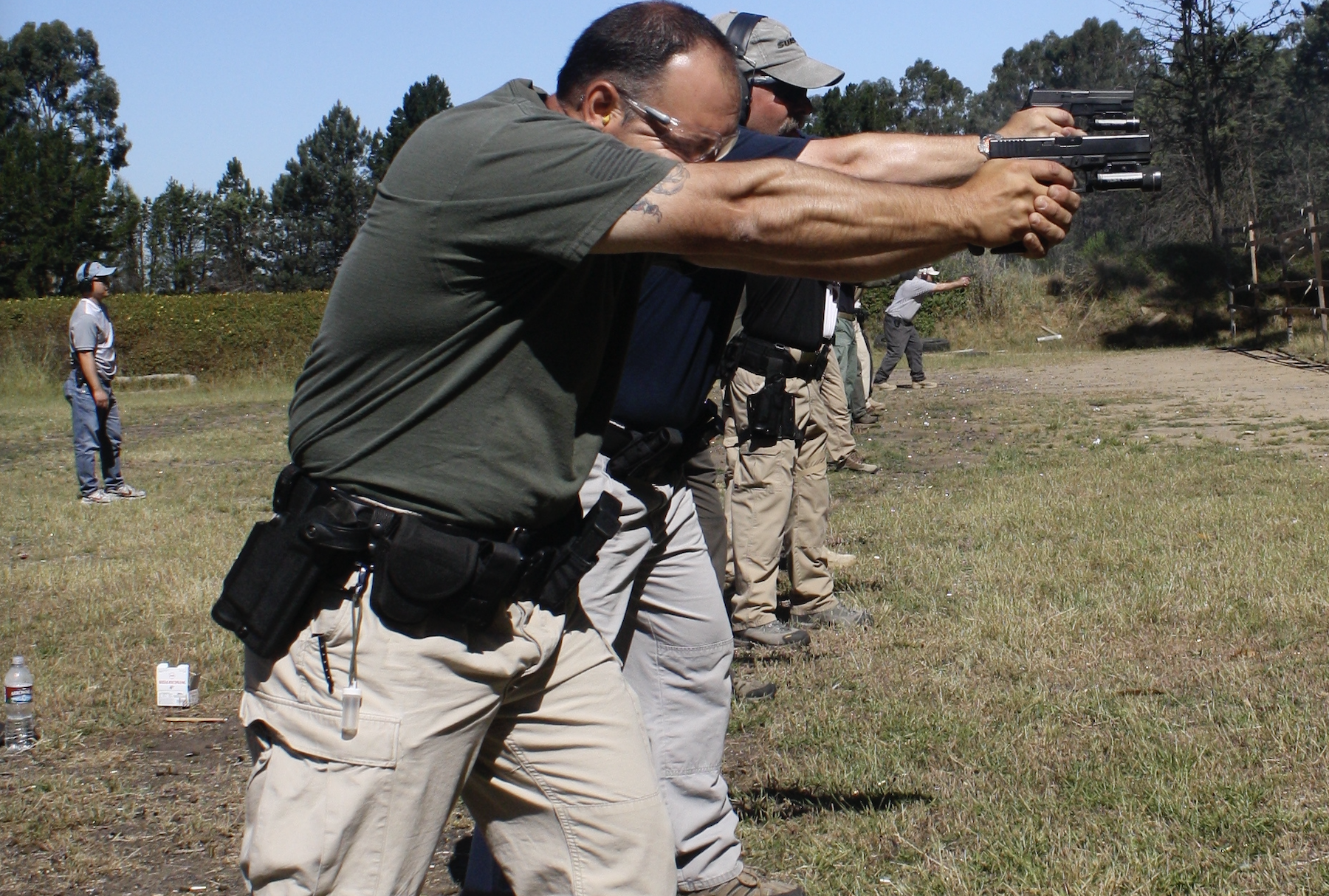
A uniformed police officer taking a practical shooting class years back. Appropriately, using what he carries daily.
What are some of the viable set-ups for teaching?
Baseline
Belt – baseline for almost every class, regardless of student base, is a multi-stitch Frequent Flyer from The Wilderness. Or an EDC Belt Co foundations belt. Both will hold an appendix-ish carry holster and a strong side hip one without issues, or I can attach a full-duty belt to it. Most times, I have a Petzl carabiner-like piece that holds my ear pro on the belt as well.
Concealed Carry Skills
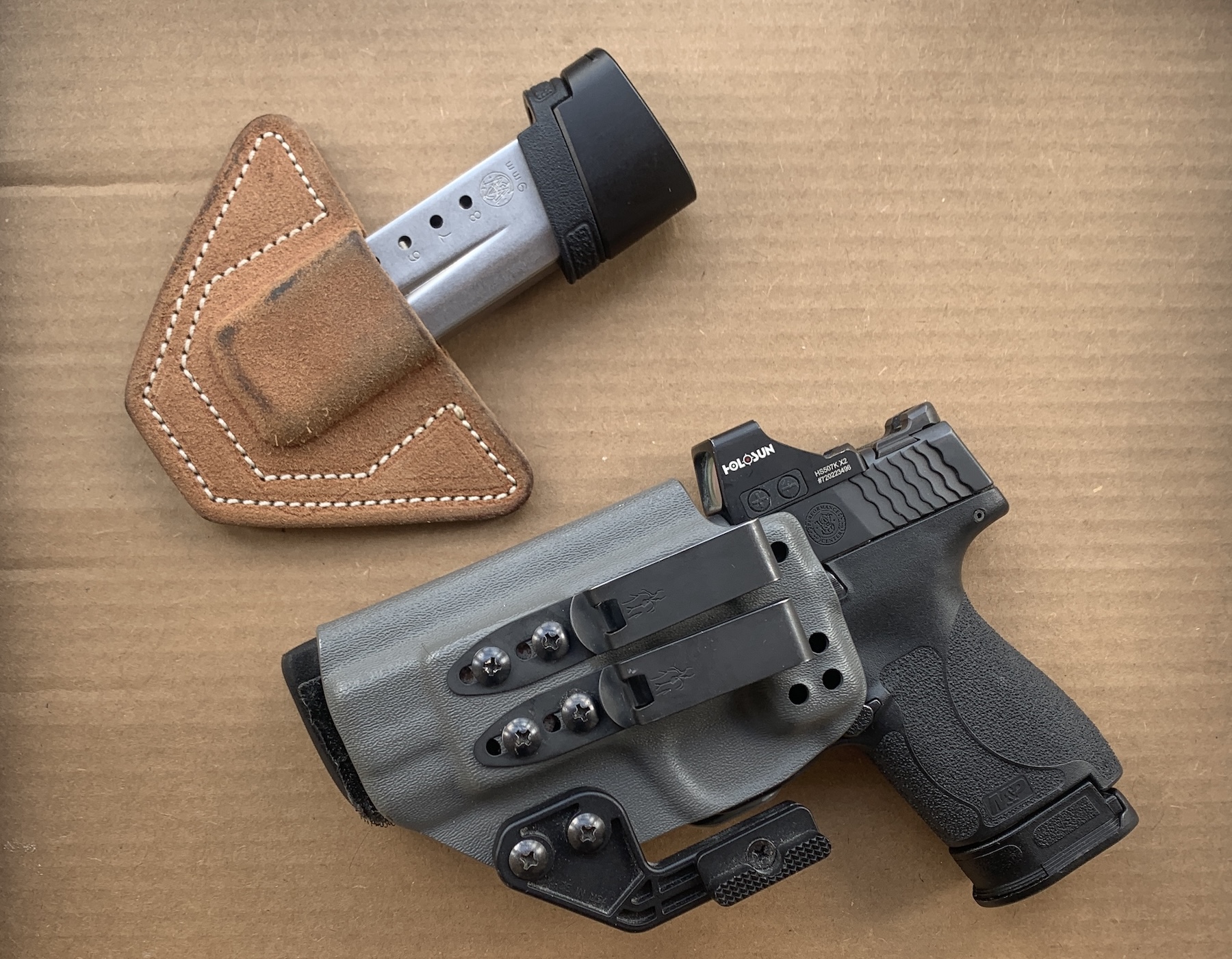
A very concealable set-up for that role – one could take a class on that subject or teach it with this.
While diving into the weeds on things like non-traditional or off-body carry may change it, generally, my teaching set-up mirrors my day-in, day-out carry:
– Lefthand AIWB from JM Custom Kydex – they make damn near bomb-proof Left-Hand holsters for the M&P 2.0. Not every “name” manufacturer remembers that some of us are left-handed and don’t carry Glocks;
– A belt-mounted mag pouch will be a single model from Fricke or Raven Concealment (RCS) or two mag versions from RCS or an old Blade-Tech design. I’ll also use a pocket mag pouch since that’s my norm;
– Flashlight and knife go on the support side.
Foundational Skills

This strong-side hip holster, designed by Dave Spaulding, is quite reasonable for foundational skill work, concealed carry, and even competition.
This could be a handgun class or one that covers a long gun, either a shotgun or an AR. It will be a strong side hip holster, openly carried, like an RCS Phantom, one from JM Custom Kydex, or a Spaulding-designed holster – sorry, can’t recall the maker; either an RCS or old style BladeTech two magazine pouch gets used; TQ holder and a smaller med kit; and as with a concealed carry skills class, flashlight and knife end up on my off-side. If it is a long-gun class, the holder for that ammunition depends on the weapon. I’ll carry a single AR pouch behind my right hip, or extra shotshells will be somewhere on my front, between my holster and the pistol mag pouches.
“Cop” Stuff

Some L/E and military classes require duty gear. My set-up includes a US Duty Gear holster and a TQ pouch from The Wilderness, all on a target from TacticalTargetSystems.com.
Currently, it’s an Eagle Industries duty belt with a US Duty Gear level II holster and:
– pistol magazine pouches,
– a flashlight and pouch,
– AR mag pouch or a shotshell holder,
– tourniquet holder,
– an individual first aid kit;
– a dump pouch;
– and a radio pouch if the location requires radios.
Body Armor
Oh, what about body armor? Do you really need it? I’m never going to try talking anyone out of necessary protective equipment. However, having worn armor for over thirty years, I’m well aware of the discomfort that goes with it. Unless you are in a team tactics or shoot house class with at least one partner, I’m not sure you need it for the square range.
If I must wear armor, it will be appropriate for the firearms being used in the class. Soft armor for handguns, and I’ll add rifle-rated plates if carbines are involved.
Final Thought

During a media event to introduce a new pistol optic back in 2020, a strong side hip holster, a spare magazine, and a TQ holder were all I needed (Photo: T. Keel).
All I would ask is that you consider reality when setting up equipment for a class. Yours as a student or your students if you are teaching them.
I’ll close with Pat McNamara’s thought – “if you are in a profession that is not tactical in nature when you come to the range, you should consider working from concealed. Maybe doing mag changes from your pockets, etc., and not throwing on a couple of thousand dollars’ worth of fancy gear.”
RESOURCES:


 (-1 rating, 1 votes)
(-1 rating, 1 votes)